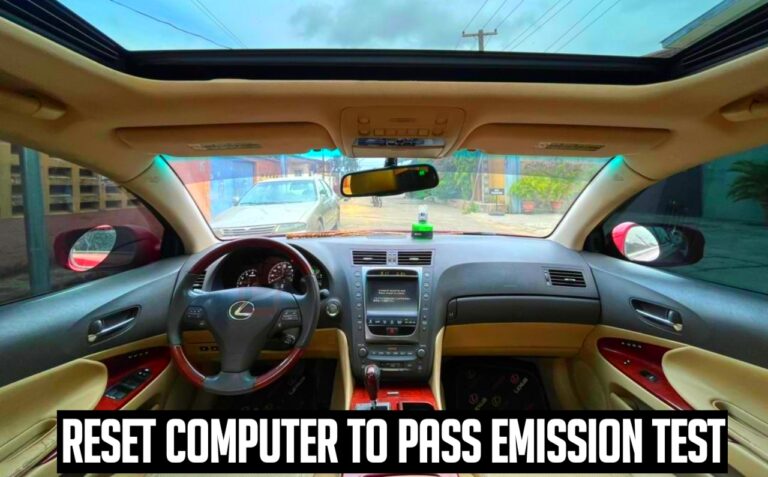In most countries, frequent emission tests are necessary for vehicle owners to ensure their cars meet the specific standard to provide a healthy environment.
However, after resetting the computer via an OBD-II scanner or disconnecting the battery, drivers often get confused about how long they must drive before their vehicle is ready to pass an emission test.
In this post, we’ll provide the miles you should drive your car after resetting the computer and factors that may affect your car’s readiness for an emission test.
How long does it take to clear out the code for emissions?
Although all vehicles have no fixed time frame, driving for at least 100 – 150 miles after the reset should be sufficient to pass an emissions test.
Driving for such a distance is essential to enable the OBD-II system to complete relevant tests across various driving conditions. Also, it helps ensure that all necessary data are accurate and that every critical test is performed.
There’s also a recommended drive cycle that must be followed very strictly. For example, you may need to incorporate a mix of city and highway driving at a certain speed while avoiding aggressive driving behavior.
To hasten this process, you can warm your car before taking it for the emissions test.
Factors Affecting Emission Test Readiness
These factors can make your vehicle fail emission tests if neglected.
Drive Cycle:
A drive cycle is simply a sequence of driving conditions, including idling for a long time, driving at various speeds, a mix of city and highway driving, etc.
While these drive cycles are manufacturer-specific, driving for 50 to 100 miles will help you complete them.
However, you’ll need to refer to your car manual to understand the approved drive cycle for your specific make and model.
Your Car’s OBD-II System Design
Depending on your car’s make and model, the OBD-II system design may need a more complex readiness test sequence that requires specific data collection.
In addition, the condition of your vehicle plays an essential role in your readiness for an emission test. E.g., Increased gas mileage.
What happens after resetting ECU?
The ECU stands for the Engine Control Module; resetting the ECM will restore the car to factory reset. All error codes or radio stations stored on your vehicle will be wiped off.
In addition, it’ll cause a temporary lag in your car’s performance until it adapts to your driving techniques.
How long should I disconnect my car battery to reset the computer?
Resetting your car’s computer by disconnecting the battery takes just 15 minutes. This will drain the current in the system and reset the ECU.
Can You Pass Emissions With the Service Engine Light On?
No, an ignited check engine light denotes a fault in your car’s emission system. You should scan and fix the code before taking it for an emission test.
Can I Still Drive My Car If It Doesn’t Pass the Emissions Test?
While driving a car that doesn’t pass an emission test is possible, you may be susceptible to paying a massive fine if caught.
Most states even take emission tests very seriously to the extent that a car owner can’t register a vehicle that doesn’t pass it.
How do I reset my ECU manually?
To manually reset your ECU, remove the negative battery terminal from the battery for at least 15 minutes to demand the current from the system.
How many miles do I drive after resetting the check engine light?
Once you’ve reset your check engine light, you may need to drive a distance of 50 to 100 miles to clear the code from the dashboard.
What Are the Consequences of Failing an Emissions Test?
If you fail an emission test, then you’ll need to repair your car to meet the specific standard that has been put in place.
You can return for an emission test once you feel the problem has been resolved.
Can a faulty ECU be repaired?
Yes, a faulty ECU can be reprogrammed or repaired. However, the cost may be high, depending on the make and model of your vehicle.
Does ECU affect car performance?
Yes, the ECU stands for the Engine Control Module, and it controls everything related to your car’s performance, ranging from fuel mileage to speed.
As an Amazon Service LLC Program Associate, V. Auto Basics earns from qualifying purchases. See Our Affiliate disclaimer.
